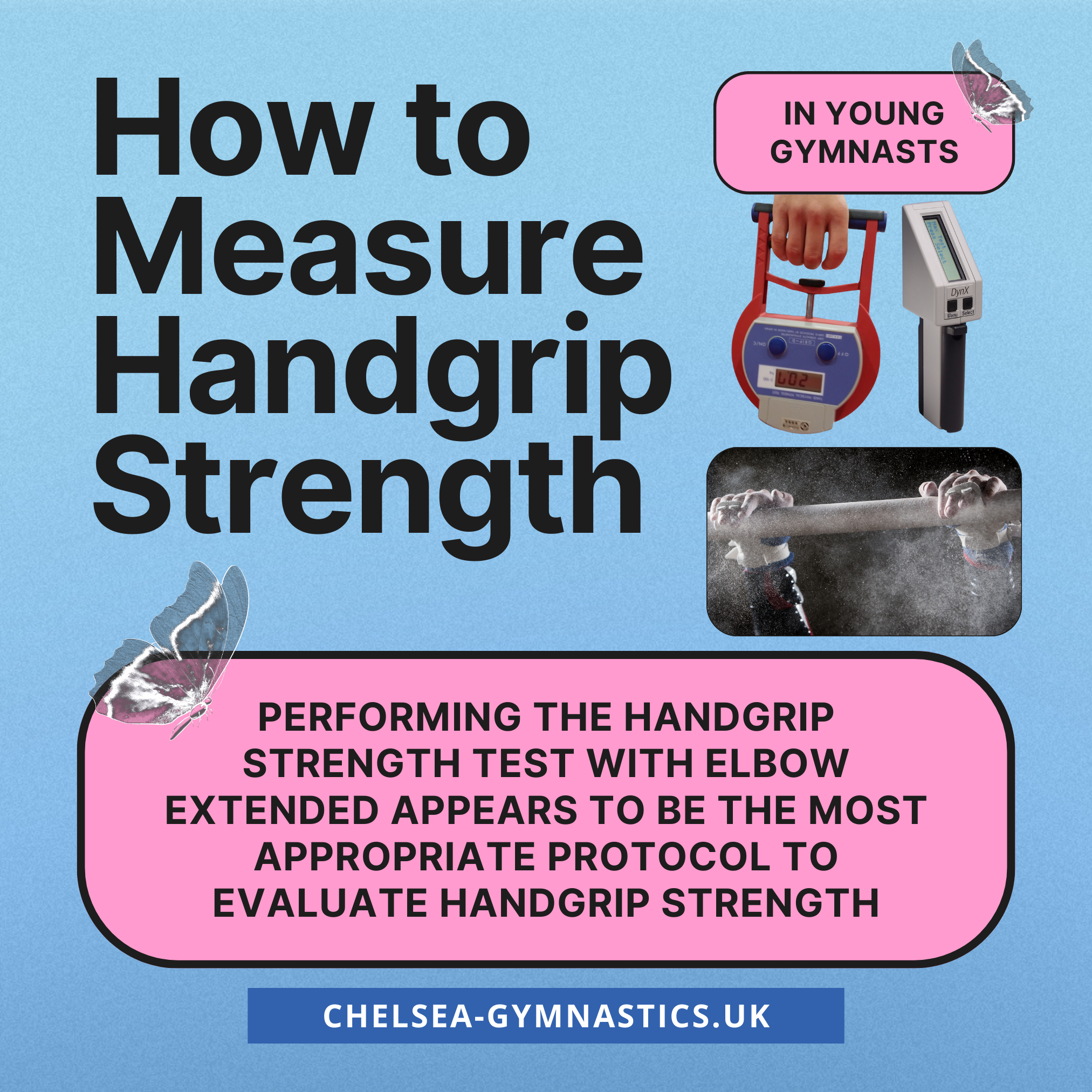How to measure Handgrip Strength?

How to Measure the Handgrip Strength in Gymnasts
Unlocking Potential: The Importance of Handgrip Strength in Children
Introduction
As a dedicated gymnastics club, we understand the significance of overall fitness in children. One often overlooked aspect is handgrip strength, which plays a crucial role in their physical development. Let's explore why handgrip strength matters and how you can assess it.
The Importance of Handgrip Strength
Handgrip strength is not just about holding onto the gymnastics equipment; it's a fundamental skill that impacts various aspects of a child's performance. Developing strong handgrip muscles can enhance their coordination, improve their performance in gymnastics routines, and boost their self-confidence. It also lays the foundation for other physical activities and sports.
Assessing Handgrip Strength
Assessing handgrip strength is a simple yet effective way to track your child's progress and tailor their training accordingly. Here's how you can do it:
Obtain a handgrip dynamometer: You can find handgrip dynamometers at sports stores or online. These devices measure the force exerted by the hand muscles.
Proper positioning: Instruct your child to stand with their feet shoulder-width apart and their arm extended straight. Based on coach Stefan's scientific research as part of his PhD in physical education, he concluded that performing the handgrip strength test with elbow extended appears to be the most appropriate position in order to obtain maximal results in children.
Adjust the dynamometer: Ensure the dynamometer fits their hand comfortably, with the handle resting on the base of their fingers.
Squeeze and record: Encourage your child to squeeze the dynamometer as hard as they can for a few seconds, without straining. Repeat 3 times with each hand and record the highest reading displayed on the dynamometer.
Comparing with norms: Click here to compare your child's handgrip strength with international norms for their age and gender. This will provide valuable insights into their progress and help you tailor their training program.
Conclusion
By emphasising the importance of handgrip strength and providing instructions on how to assess it, we are empowering parents and children to unlock their full potential. Incorporating handgrip strength exercises into the gymnastics training sessions will not only enhance your children's performance but also contribute to their overall physical development. Remember, strong hands lead to strong minds and bodies. Let's work together to help children build a solid foundation for a lifetime of fitness and success!
Learn more
Reference
Kolimechkov, S., Castro-Piñero, J., Petrov, L., & Alexandrova, A. (2020). The effect of elbow position on the handgrip strength test in children: validity and reliability of TKK 5101 and DynX dynamometers. Pedagogy of Physical Culture and Sports, 24(5), 240-247. https://doi.org/10.15561/26649837.2020.0504
Kolimechkov, S., Petrov, L., & Alexandrova, A. (2019). Alpha-fit test battery norms for children and adolescents from 5 to 18 years of age obtained by a linear interpolation of existing European physical fitness references. European Journal of Physical Education and Sport Science, 5(4), 1-14.
Join a Community of Health-Conscious Parents
Share this post with other parents who might be interested in assessing their child's handgrip isometric strength. Together, let's inspire a generation of fit and healthy kids! Remember, if you have any questions or need further assistance, our team is here to support you every step of the way. Let's make gymnastics a fun and rewarding experience for your child!